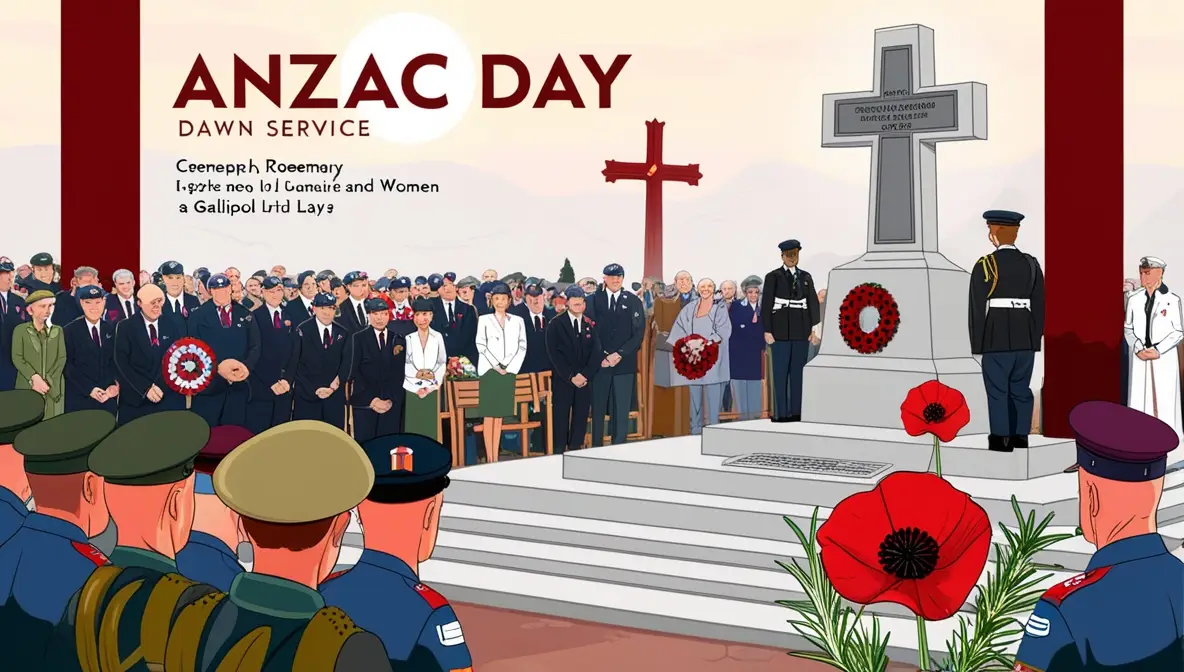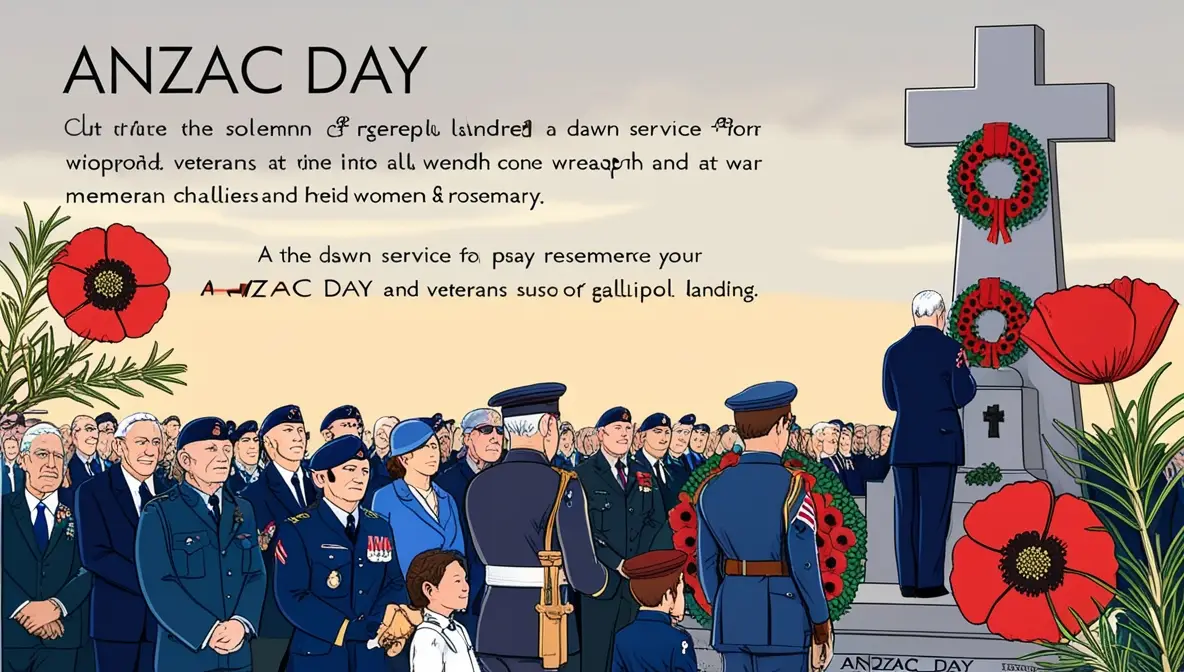ANZAC Day
ANZAC Day: Honoring the Heroes of Australia and New Zealand
ANZAC Day holds a special place in the hearts of Australians and New Zealanders. It is a day of remembrance and gratitude, commemorating the brave men and women who served and sacrificed their lives in the Australian and New Zealand Army Corps (ANZAC) during World War I. In this comprehensive article, we will delve into the significance of ANZAC Day, explore its history, traditions, and rituals, and pay tribute to the heroes who have shaped the spirit of these nations.

[su_box title=”Anzac Day : Next years” box_color=”#fb0400″]
- Friday, 25 April 2025
- Saturday, 25 April 2026
- Sunday, 25 April 2027
- Tuesday, 25 April 2028
[/su_box]
ANZAC Day: A Day of Remembrance and Reflection
ANZAC Day, celebrated on April 25th each year, is a solemn occasion for Australians and New Zealanders. It serves as a poignant reminder of the hardships, bravery, and sacrifices made by the ANZAC soldiers during the Gallipoli Campaign in 1915, where thousands lost their lives. This day allows us to reflect upon the resilience, camaraderie, and national identity that emerged from the ANZAC legacy.

The Origins of ANZAC Day
ANZAC Day traces its roots back to the end of World War I when the first anniversary of the landing at Gallipoli was commemorated in 1916. The day was initially named ANZAC Day to honor the Australian and New Zealand troops who fought valiantly in Gallipoli. Over time, the significance of ANZAC Day expanded to encompass all Australians and New Zealanders who have served and continue to serve in the armed forces.
ANZAC Day Traditions and Commemorative Activities
- Dawn Service
- The Dawn Service is a solemn and iconic ANZAC Day tradition. It begins before sunrise, symbolizing the time of the original Gallipoli landing. People gather at war memorials, cenotaphs, and military cemeteries to pay their respects and honor the fallen soldiers. The service typically includes prayers, hymns, speeches, and the laying of wreaths.
- Commemorative Marches
- Commemorative marches are an integral part of ANZAC Day, with veterans, current servicemen and women, and descendants proudly marching together. These marches provide an opportunity for the community to express gratitude and support for those who have served their country.
- Two-Up Games
- Two-Up, a traditional Australian gambling game, is legally played only on ANZAC Day. It involves tossing two coins in the air and betting on how they will land. This game gained popularity among the soldiers during wartime, serving as a form of entertainment and camaraderie.
- ANZAC Biscuits
- ANZAC Biscuits, a sweet treat made from oats, flour, coconut, and golden syrup, hold historical significance. These biscuits were sent by loved ones to soldiers during World War I. Baking ANZAC Biscuits has become a cherished tradition to commemorate the spirit of ANZAC Day.
- Poppy Appeal
- The Poppy Appeal, inspired by the famous war poem “In Flanders Fields,” is a fundraising campaign conducted by the Returned and Services League (RSL). People wear red poppy pins to honor the fallen and contribute to supporting veterans and their families.
ANZAC Day: A Day of National Identity and Reflection
ANZAC Day serves as a powerful symbol of national identity for Australians and New Zealanders. It represents the values of courage, resilience, and mateship that are deeply ingrained in the fabric of these nations. The ANZAC spirit unites communities, fosters remembrance, and reinforces the importance of honoring those who have selflessly served their countries.
FAQs about ANZAC Day
- What does ANZAC stand for?
- ANZAC stands for Australian and New Zealand Army Corps.
- How is ANZAC Day different from Remembrance Day?
- ANZAC Day specifically commemorates the soldiers who served in the ANZAC during World War I, primarily focusing on the Gallipoli Campaign. Remembrance Day, on the other hand, honors all soldiers who have lost their lives in conflicts.
- Are there any specific symbols associated with ANZAC Day?
- Yes, the red poppy is the most recognized symbol of ANZAC Day. It represents the bloodshed and sacrifice of the soldiers. The rosemary herb is also associated with ANZAC Day as a symbol of remembrance.
- Can anyone participate in the Dawn Service?
- Yes, the Dawn Service is open to the public. It is encouraged for individuals to attend and pay their respects.
- How can I support veterans and their families on ANZAC Day?
- You can contribute to the Poppy Appeal or donate to organizations that support veterans and their families. Additionally, attending commemorative events and showing gratitude to veterans is a meaningful way to support them.
- What are some ways to teach children about ANZAC Day?
- Engage children in age-appropriate activities such as making poppy crafts, reading ANZAC stories, or visiting war memorials. These activities help children develop an understanding and appreciation for the sacrifices made by the ANZAC soldiers.
ANZAC Day stands as a testament to the bravery and sacrifice of the Australian and New Zealand soldiers who served their nations. It is a day of remembrance, reflection, and gratitude for the ANZAC legacy. By commemorating this significant day, we honor the heroes who shaped the spirit of our nations and reaffirm the values they fought to protect.


